Maine brothers build off-the-grid yurt in the forest by themselves that’s 300 square feet – but there’s a major catch
Two brothers with a deep love of the outdoors built an idyllic yurt deep in the woods of Maine that seems like the perfect getaway, but there’s a major drawback.
Jason and Matt Duff had no construction background when they started working on their dream yurt.
“Neither of them were builders,” Jason Duff admitted.
Undeterred, the brothers decided to build their sustainable paradise anyway, using their wealth of knowledge in the field of environmental sciences.
The Duffs spent time tracking down the perfect piece of land on which to build their yurt, which would have minimal impact on the environment and resources.
Two brothers with a deep love of the outdoors built an idyllic yurt deep in the woods of Maine that seems to be the perfect getaway, but there’s a major drawback
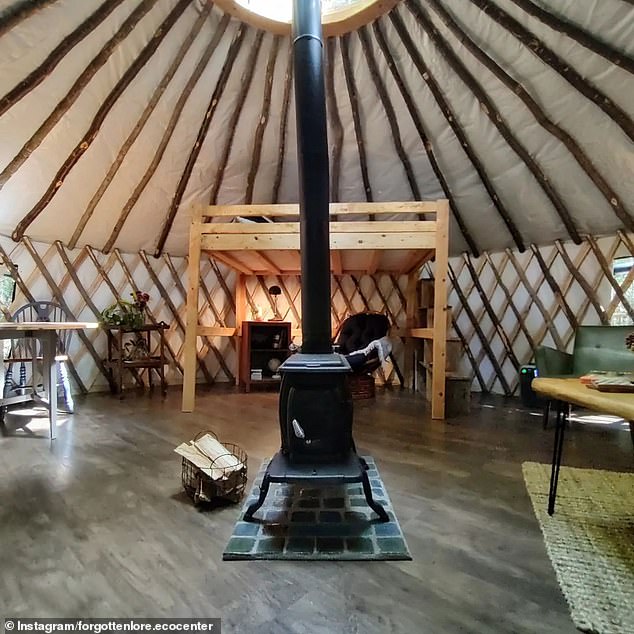
The brothers started the project in March 2023, worked tirelessly over the next four months, and completed the yurt in July.
The brothers started the project in March 2023, worked tirelessly over the next four months, and completed the yurt in July.
When completed, the yurt was twenty feet in diameter and weighed more than 500 pounds.
Although the Duffs’ creation was grander than expected – equipped with an outdoor kitchen and solar-powered shower – there was one major pitfall:
Residents should use a composting outhouse.
A composting outbuilding is an outbuilding that does not use water for flushing. Instead, human waste is treated and turned into compost.
Given Maine’s frigid weather and snowy conditions, this means residents will have to endure the elements to use the bathroom.
Additionally, the bathroom walls do not appear to be insulated, meaning that using the bathroom in the winter, when average temperatures drop to 15 degrees Fahrenheit, would be an ordeal.
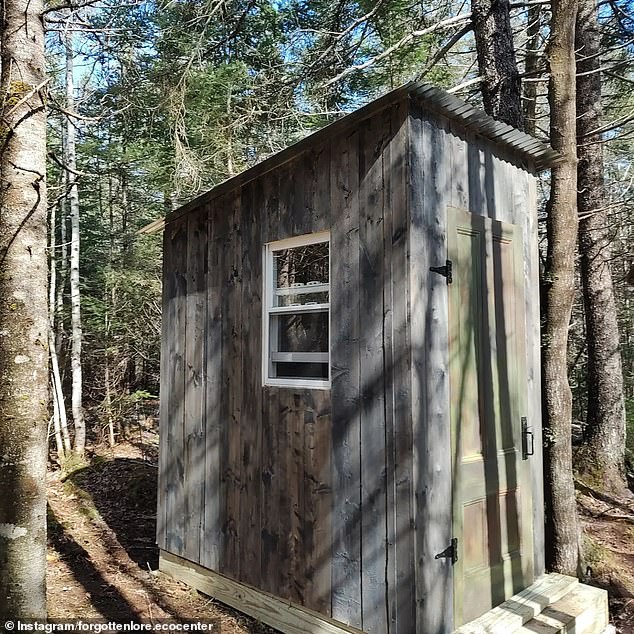
A composting outbuilding is an outbuilding that does not use water for flushing. Instead, human waste is treated and turned into compost (fertilizer). Given Maine’s frigid weather and snowy conditions, this means residents will have to endure the elements to use the bathroom
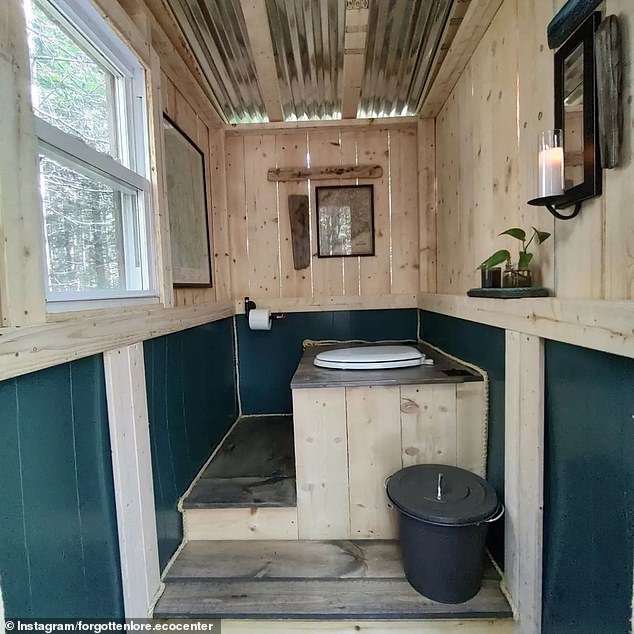
Additionally, the bathroom walls do not appear to be insulated, meaning that using the bathroom in the winter, when average temperatures drop to 15 degrees Fahrenheit, would be an ordeal.
Finding potable drinking water was also a challenge that required ingenuity to solve.
Another caveat is that the yurt is remote and can only be accessed by a narrow path that takes five minutes.
The distance between their piece of land and the rest of the world posed a challenge for the brothers as they built their yurt.
“We had to carry that firmly into the woods, just down a narrow forest path,” Matt Duff said elsworthamerican.
He added: “Literally one foot at a time, it took us a long time.”
But the Duffs were in love with their remote plot of land. It was located along a stream and a pond, and by purchasing it the brothers hoped to prevent any other form of development on the property.
“It was just a beautiful but completely undeveloped piece of forestland,” said Jason Duff, who worked for the Portland Water Quality District and studied aquatic ecology in graduate school.

Jason (left) and Matt (right) Duff had no construction background when they started working on their dream yurt
“We were really excited about the possibilities,” Jason added.
Not long after the brothers began documenting the construction of their yurt, they were approached by producers of Discovery Network’s “Building off the Grid,” a reality show that focuses on sustainable construction projects.
The television series wanted the brothers to appear in an episode, which was a dream come true for the Duffs as they are supporters of the show.
“We were fans of that show,” Jason said before adding, “we had watched like every episode.
Matt, who has a degree in earth sciences and hydrogeology, said it was their shared love of the reality series that inspired them to build their yurt in the first place.
‘[The show] forced us to look for land,” Matt said. “It continued to inspire us to keep going.”
The program’s tight filming schedule forced the brothers to work at a faster pace and forced them to spend their weekends and free time working on the yurt.
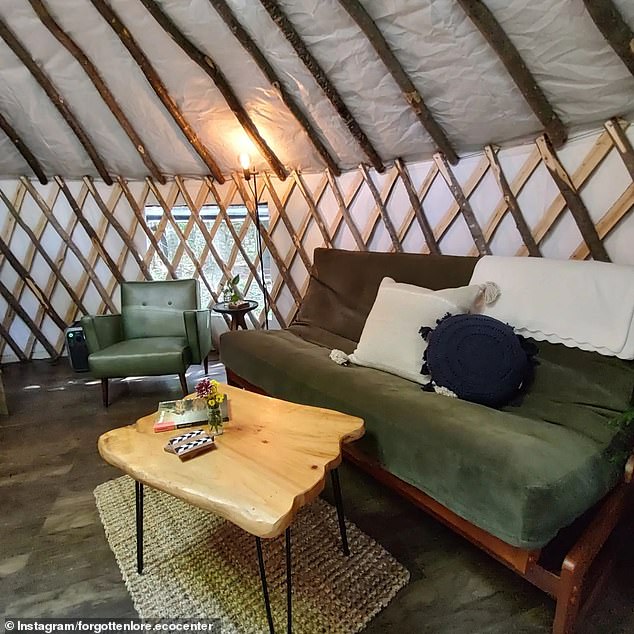
When completed, the yurt was twenty feet in diameter and weighed more than 500 pounds
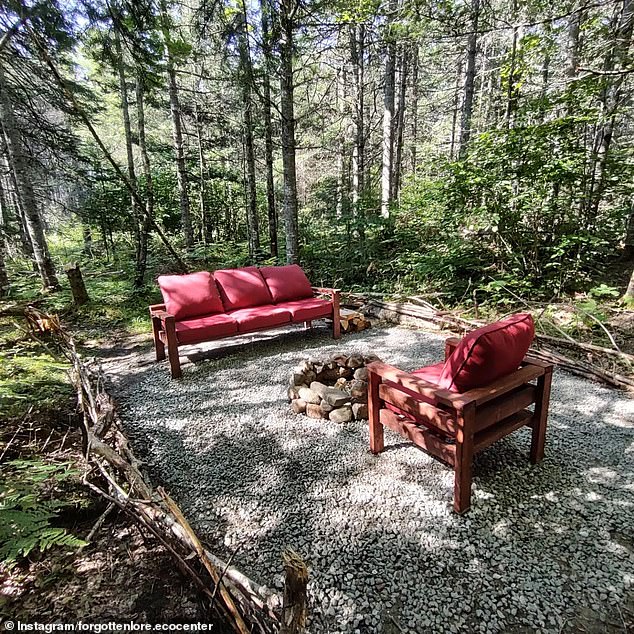
Around the yurt, the Duffs built a deck from about 100 pieces of wood. Using solar-powered tools, the brothers also built a greenhouse and garden box from reclaimed wood
“It worked out well because it forced us to get everything done quickly,” Jason said.
Although most yurts are made from packages of ground wood, the brothers opted for a more environmentally friendly option consisting of harvested and dried saplings.
“You can tell it’s very unique,” Matt said.
The brothers assembled the pieces of the yurt as if they were parts of an accordion and completed the construction by covering the structure with a sturdy canvas cloth.
Around the yurt, the Duffs built a deck from about 100 pieces of wood. Using solar-powered tools, the brothers also built a greenhouse and garden box from reclaimed wood.
Since its completion in July 2023, the yurt has survived one winter and emerged with only minor damage.
“It was fine all winter,” Jason said, noting that heavy snow could fall.
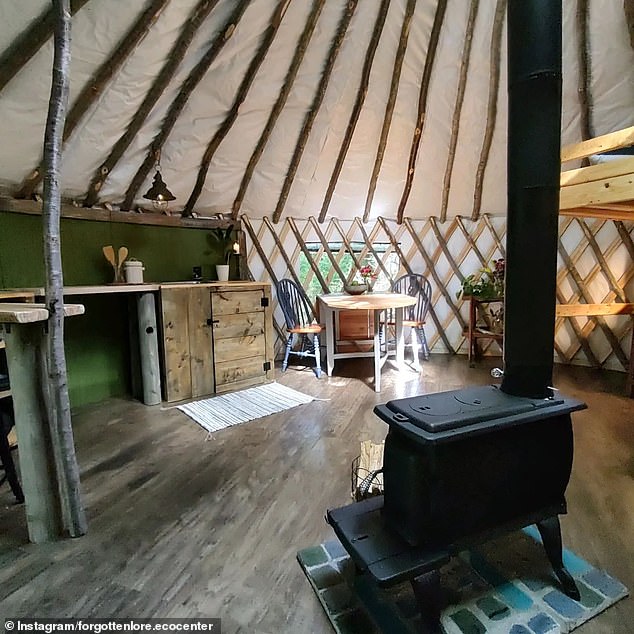
Although most yurts are made from packages of ground wood, the brothers opted for a more environmentally friendly option consisting of harvested and dried saplings
The Duffs are quick to acknowledge the tremendous help and support they have received from their family, girlfriends and friends.
Before their episode of “Building off the Grid” aired on June 6, the brothers talked about their fear that it would look like they built the yurt themselves.
“My biggest concern with the show is that they will give the impression that Matt and I did it all,” Jason said. “That’s just not true at all.”
“I’m just really grateful for all the help we’ve had with the whole thing,” Matt added.
